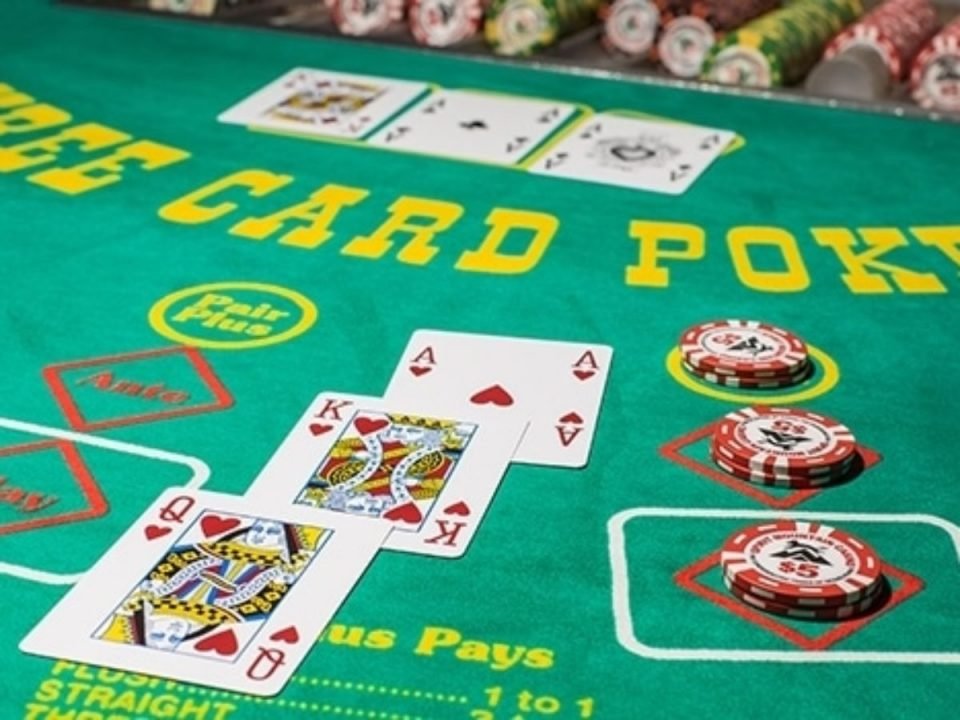3 card poker is a popular casino game that is easy to learn and exciting to play. The game is a variation of traditional poker and is played with a standard deck of 52 cards. In this article, we will provide a step-by-step guide on how to play 3 card poker.
3 card poker is a fast-paced game that combines elements of poker and casino games. The game is played with a standard deck of 52 cards, and the objective is to make the best possible 3 card poker hand. The game is played against the dealer, and players can make multiple bets during each round.
3 Card Poker Rules
3 card poker is played with a standard deck of 52 cards. Each player is dealt three cards face down. The dealer also receives three cards, but one card is face up.
Players have the option to make two types of bets: an ante bet and a pair plus bet. The ante bet is a bet on whether or not the player’s hand will beat the dealer’s hand. The pair plus bet is a bet on whether or not the player’s hand will contain a pair or better.
Ante Bet
To start a round of 3 card poker, players must make an ante bet. The ante bet must be equal to or greater than the minimum bet posted at the table. After all players have made their ante bets, the dealer will deal three cards to each player and three cards to themselves.
Pair Plus Bet
In addition to the ante bet, players have the option to make a pair plus bet. The pair plus bet is a bet on whether or not the player’s hand will contain a pair or better. The pair plus bet is independent of the ante bet and does not require the player to beat the dealer’s hand.
Play Bet
After the players have received their cards, they have the option to make a play bet. The play bet must be equal to or greater than the ante bet. If the player chooses to make a play bet, they must place their cards face down on the table. If the player chooses not to make a play bet, they must fold their hand and forfeit their ante bet.
Payouts
If the player makes an ante bet and the dealer’s hand does not qualify (i.e., does not contain a Queen or higher), the player’s ante bet is paid out at even money, and the play bet is returned to the player.
If the dealer’s hand does qualify, and the player’s hand beats the dealer’s hand, both the ante bet and the play bet are paid out at even money.
If the dealer’s hand does qualify, and the player’s hand ties the dealer’s hand, both the ante bet and the play bet push.
If the dealer’s hand does qualify, and the player’s hand loses to the dealer’s hand, both the ante bet and the play bet are lost.
If the player makes a pair plus bet and their hand contains a pair or better, the pair plus bet is paid out according to a predetermined pay table.
Strategy
When playing 3 card poker, it is important to have a basic strategy in place to maximize your chances of winning. One common strategy is to make the play bet whenever the player’s hand contains a Queen, Six, Four or better. This strategy will result in a play bet being made in about 75% of hands dealt.
Conclusion
3 card poker is a fun and exciting game that is easy to learn and offers the potential for big payouts. By following the rules and basic strategy outlined in this guide, you can start playing 3 card poker with confidence and increase your chances of winning.
FAQs
Is 3 card poker a game of skill or luck?
3 card poker is a game that involves both skill and luck. While the cards dealt are random, players can make strategic decisions when placing their bets and playing their hands.
Can I make both an ante bet and a pair plus bet?
Yes, players can make both an ante bet and a pair plus bet during each round of 3 card poker.
What is the payout for a pair plus bet?
The payout for a pair plus bet varies depending on the pay table used by the casino. It is important to check the pay table before making a pair plus bet.
Can I play 3 card poker online?
Yes, many online casinos offer 3 card poker games that you can play from the comfort of your own home.
What is the best strategy for playing 3 card poker?
The best strategy for playing 3 card poker is to make the play bet whenever your hand contains a Queen, Six, Four or better. This strategy will result in a play bet being made in about 75% of hands dealt. However, it is important to always play responsibly and within your means.
